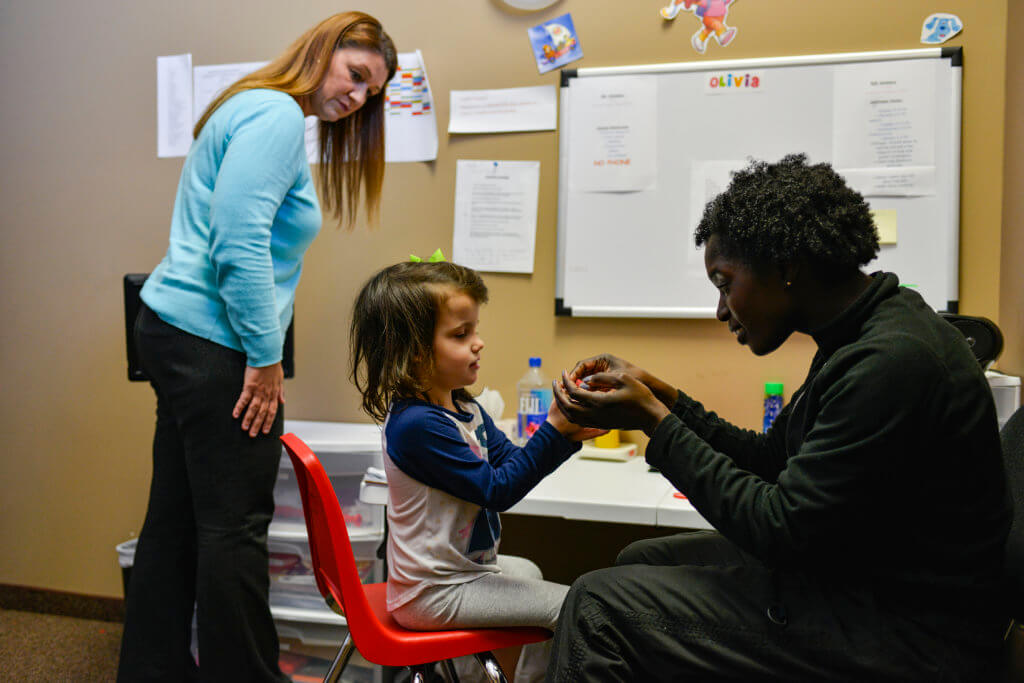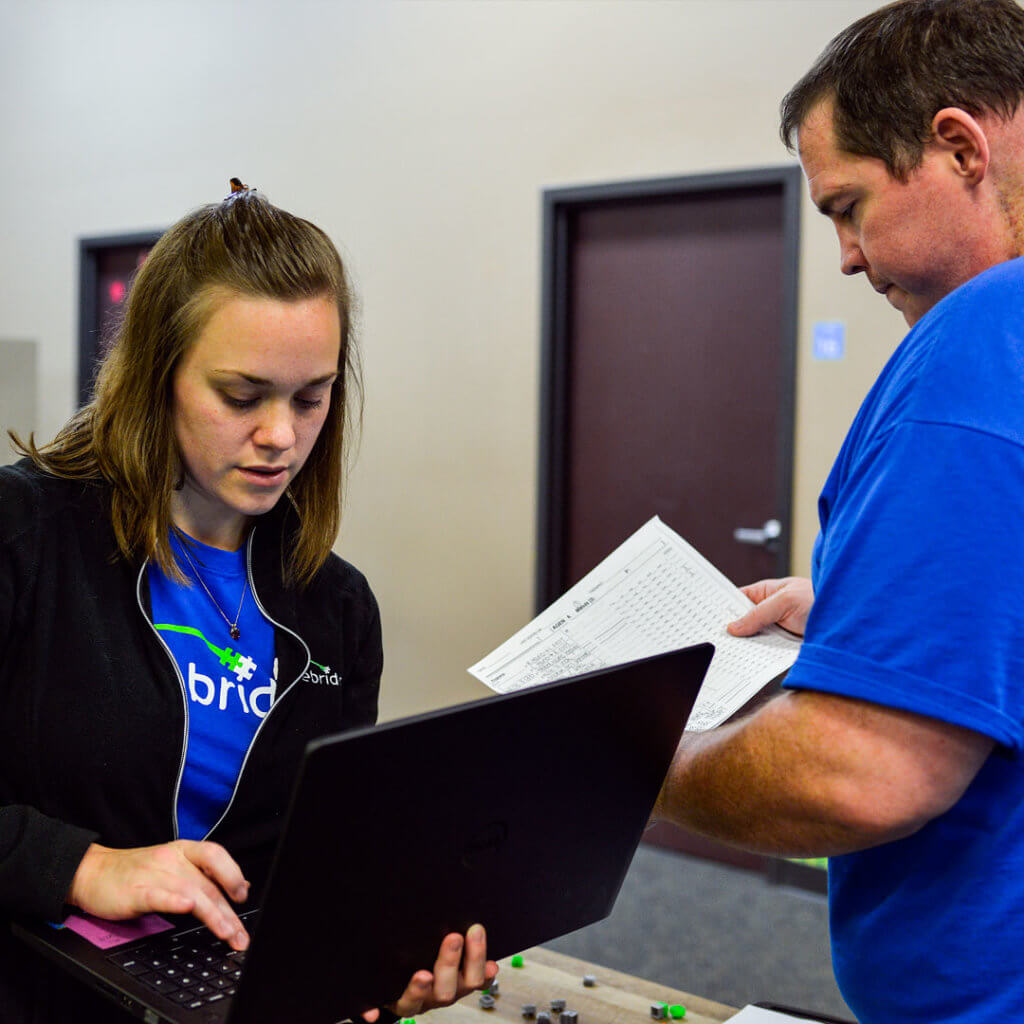10 Common Questions About ABA Therapy
October 15, 2021
October 15, 2021

If your child has been diagnosed with autism spectrum disorder (ASD), or if there is a concern they might have autism, you’ve likely heard about applied behavior analysis (ABA therapy). Maybe your pediatrician mentioned it, or another autism parent told you how much it helped her son or daughter in the years leading up to school. Or perhaps you heard about it on Instagram or TikTok. But what does ABA look like and how does it work?
Chances are, you still feel you’re lacking details on what the possibilities for autism therapy are for your child. We want to give you the broad picture of ABA, as well as get down to the nitty-gritty, before you make these life-changing decisions for your kid and family. To do that, we compiled 10 of the questions we see most often about ABA therapy and answered them from the Hopebridge perspective.
1. Does ABA therapy work?
ABA therapy is the only evidence-based treatment for autism, having passed scientific tests of its usefulness, quality and effectiveness. Research shows that it leads to gains in communication, social and daily living skills and more, though not all ABA programs are created equal. At Hopebridge, our services include one-on-one programs with goals and plans that are customized to the needs of each individual and family we serve. Our mission is to make sure we give our children the attention and means to the same opportunities as their neurotypical peers so they can reach their own goals in life. We’ve seen the results of ABA in action, but don’t just take our word for it. Read about how Hopebridge’s ABA therapy has impacted our children’s lives by reading about their wins, both big and small, in the Kiddo Spotlights on the Hopebridge blog.
2. Can ABA therapy cure autism?

There is no cure for autism, nor has it ever been our intention to find one in our more than 15 years of care for the autism community. At Hopebridge, we value neurodiversity and the individual personalities and characteristics of each child we serve. ABA is an evidence-based treatment for autism, but our services are not meant to mask autism. Rather, they are intended to help our kiddos build communication, social and foundational skills so they can lead more independent and fulfilling lives.
3. Is ABA therapy considered health care?
Simply put, yes, applied behavior analysis falls under the health care umbrella, even though therapy can be educational, as well. Specifically, ABA therapy can be a key player in addressing behavioral health for individuals with autism. Research shows that ABA therapy – especially at a young age and combined with other interdisciplinary therapies – can lead to significant, measurable improvements in child development.
4. Does ABA therapy include speech therapy or occupational therapy?

Behavior analysis is separate from occupational therapy and speech therapy, but these therapies are complementary. ABA focuses on predicting and influencing behaviors, whereas speech therapy is primarily centered around building effective communication and language (which is not always vocal), and occupational therapy uses play to teach kids the foundational skills they need to occupy their time as they grow. At Hopebridge, we offer interdisciplinary programs of care that often blend all three services, as well as feeding therapy, in some cases, to give our kids the chance to lead their best lives.
5. Does ABA therapy replace school?
ABA therapy is not meant to replace school, as it is not centered around academics, but it is beneficial in preparing children with autism for school. When taking part in early intensive behavioral interventions like ABA therapy, toddlers, preschool-age children and even those a little older can work on the essential skills they need to enter the classroom. Working on school readiness at Hopebridge includes communication support; self-care and hygiene, like toileting and washing hands; paying attention and responding to teachers; following instructions; eating lunch around other people; and being aware of one’s own body and personal space. This is especially enhanced with Hopebridge’s center-based therapy, which offers opportunities for cooperative peer play and group settings like circle time, in addition to one-on-one therapy. When combined with Hopebridge’s complementary services like occupational therapy, we can also help children learn to hold a pencil, use scissors, tolerate sitting in a chair and more—all of which can lead to success in the classroom.
6. Is there parent involvement in ABA therapy?

This question comes up a lot in various formats, such as “Can parents do ABA therapy?” and “Are parents allowed to watch ABA therapy?” We can’t answer this for all providers, but with Hopebridge, our response is a definite and very loud “yes, please!” Our clinicians – though highly qualified experts in their fields – know that parent involvement is crucial to therapy’s success. That’s why we offer personalized parent training sessions, which cover everything from autism education and goal setting, to providing observation opportunities and hands-on strategies and tools parents can use on their own time to help generalize skills in and around the home. Our ABA practitioners do not operate in silos; we want to be your partners on this autism journey. You know your child better than anyone and you need to have a voice in creating their goals and know what’s going on during therapy, too.
7. Is ABA used to remove certain behaviors?
We often use ABA strategies like behavior modification and positive reinforcement to decrease challenging behaviors. This can include self-injurious behavior, aggressive behaviors, and some self-stimulatory behaviors that could pose harm like chewing or licking inappropriate objects. This being said, it is equally important that we get to the root – the reason for the behavior – so we can help them manage what is triggering them, if needed. However, stimming is many times a harmless way for individuals to self-regulate or express joy, so while we can offer alternative options for the moments when it interferes with other significant tasks, it is not our goal to stop our children from stimming if it is not causing problems in their lives. ABA methods help children learn “what to do” versus solely “what not to do.”
8. Is ABA therapy covered by insurance or Medicaid?

Each healthcare plan is different and coverage may vary by state, policy and diagnosis, but at Hopebridge, ABA therapy is covered more often than not. Hopebridge accepts a vast range of commercial insurance plans and Medicaid in an effort to provide accessible care to the families we serve.
9. Does ABA use positive reinforcement?
Positive reinforcement is a key principle in ABA. Applied behavior analysis is a structured, data-driven way to change behavior by looking at what is reinforcing it. Behavior that is reinforced tends to be repeated, and behavior that is not reinforced will disappear. Learning through positive reinforcement is how Hopebridge teaches your child to acquire and retain new and old skills. We also provide opportunities for intrinsic motivation and natural reinforcement through play in order to increase generalization, so children will not always be reliant on reinforcers.
10. Is ABA therapy only for autism?
ABA is not solely effective for individuals on the spectrum. The principles and strategies used in ABA can be implemented for a range of individuals of varying ages and skill levels, as well as across many environments … even for some companies who put it into practice with their employees! That being said, in most areas of the United States, insurance companies typically require a formal autism diagnosis in order to cover the costs of ABA therapy.
Do you have more questions around autism diagnoses or autism therapy? You’re in luck. Check out even more frequently asked questions or fill out the quick form on our website to learn more about our multidisciplinary services and arrange an evaluation at one of our centers across the nation.
*Informed consent was obtained from the participants in this article. This information should not be captured and reused without express permission from Hopebridge, LLC. Testimonials are solicited as part of an open casting call process for testimonials from former client caregivers. Hopebridge does not permit clinical employees to solicit or use testimonials about therapeutic services received from current clients (Ethics Code for Behavior Analysts 5.07-5.08; BACB, 2020). Hopebridge does not provide any incentives, compensation, or renumeration for testimonials provided by a former client or client caregiver.
Parenting Resources
November 26, 2025
This Thanksgiving, Hopebridge Experts Want Parents to Know That Picky Eating Isn’t Always 'Just Picky Eating'
Parenting Resources
September 20, 2022
Is Your Child Ready for School? 5 Signs to Consider
Parenting Resources
March 11, 2025
Speech Pathologist-Approved Podcasts for Children with Autism and Language Delays